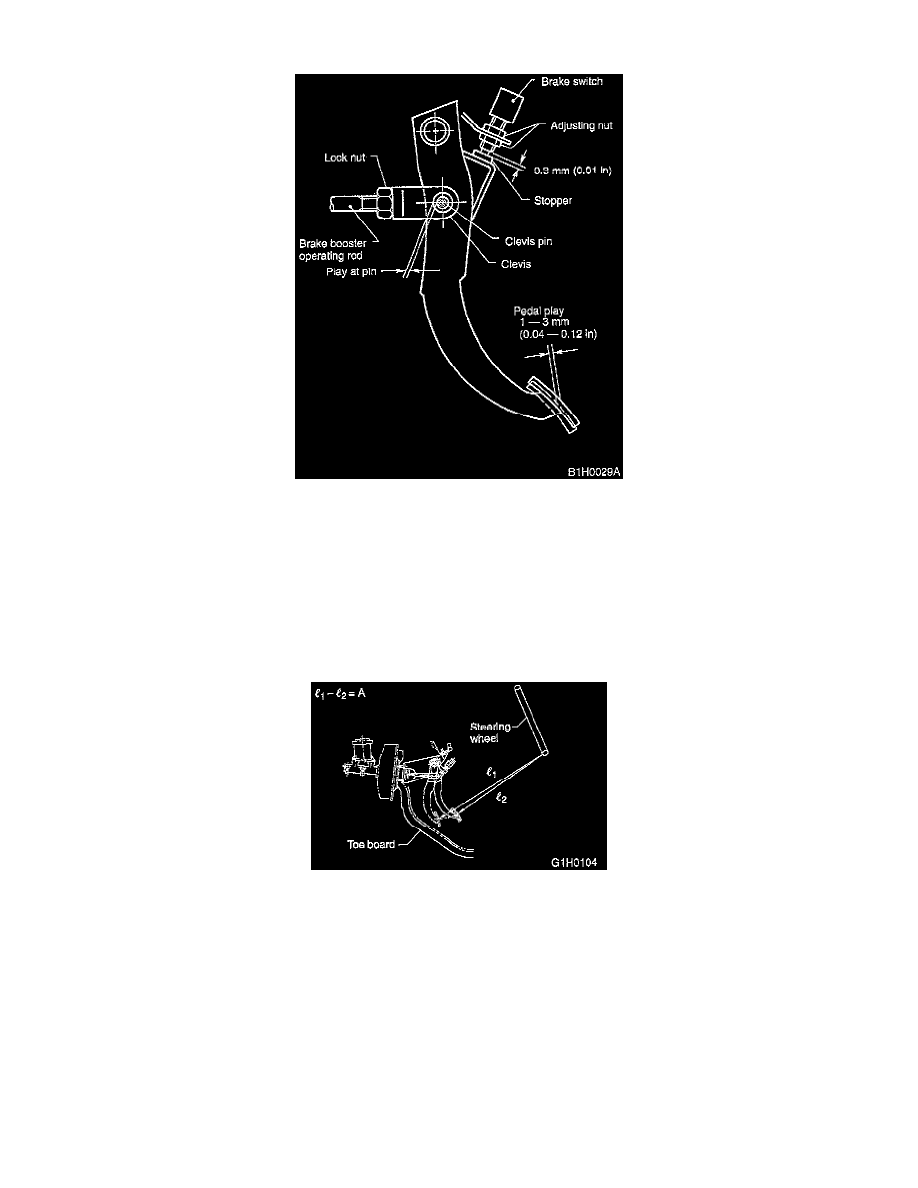Legacy GT LTD Sedan AWD F4-2.5L DOHC (1998)

Brake Pedal Assy: Testing and Inspection
1. Check the free play of brake pedal with a force of less than 10 N (1 kg, 2 lbs.).
Brake pedal free play: 1 - 3 mm (0.04 - 0.12 inch)
If the free play is out of specifications above, adjust the brake pedal as follows:
(a) Be sure engine is off. (No vacuum is applied to brake booster.)
(b) There should be play between brake booster clevis and pin at brake pedal installing portion.
[Depress brake pedal pad with a force of less than 10 N (1 kg, 2 lbs.) to a stroke of 1 to 3 mm (0.04 to 0.12 inch).
(c) Depress the surface of brake pad by hand.
(d) If there is no free play between clevis pin and clevis, turn brake switch adjusting nut until the clearance between stopper and screw of brake
switch becomes 0.3 mm (0.01 inch).
2. Check the pedal stroke.
While the engine is idling, depress the brake pedal with a 490 N (50 kg, 110 lbs.) load and measure the distance between the brake pedal and
steering wheel. With the brake pedal released, measure the distance between the pedal and steering wheel again. The difference between the two
measurements must be less than 90 mm (3.54 inch) [with ABS, 95 mm (3.74 inch)]. If the distance is more than specified, there is a possibility air
is in the inside of the hydraulic unit.
Specified pedal stroke: A
With ABS: less than 95 mm (3.74 inch)/ 490 N (50 kg, 110 lbs.)
Without ABS: less than 90 mm (3.54 inch)/ 490 N (50 kg, 110 lbs.)
3. Check to see if air is in the hydraulic brake line by the feel of pedal operation. If air appears to exist in the line, bleed it from the system.
4. Check for even operation of all brakes, using a brake tester or by driving the vehicle for a short distance on a straight road.
